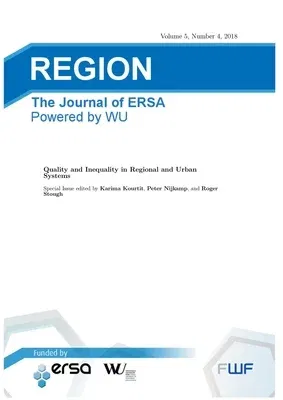In the aftermath of both ongoing globalisation (with both widening and
deepening effects on countries, regions and cities) and structural
changes resulting from the 2008 economic recession, regions and cities
in our world are confronted with a different arena of players,
performances and institutions. The challenges are formidable and
numerous. Many regions and cities seem to resort to their indigenous
strength, without much regard to other players in the field. This has
enormous consequences for the competitive behaviour and profile of
regional and urban actors but has at the same time deep impacts on the
distribution of wealth, income and employment over and within countries,
regions and cities. There is indeed much evidence that disparities among
regions and in cities are increasing in this new force field. This
special issue of REGION makes a solid scientific attempt (i) to map out
the spatial consequences of recent transitions in growth trajectories of
countries or regions, and (ii) to trace policy strategies and design
effective policy information, to cope adequately with these new
challenges. The present special issue does so by highlighting the new
force field of regional and urban dynamics from three angles in the
context of spatial quality and inequality. These will be briefly
sketched below.


